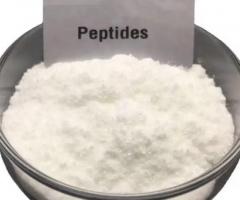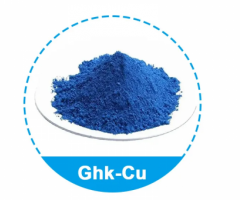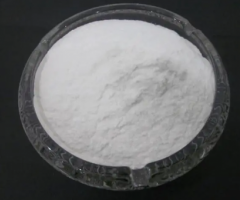Name: Asian Ginseng
Biological Name: Panax ginseng
Other Names: Ginseng - Asian, Asiatic ginseng, Chinese ginseng, wonder of the world, Asian Ginseng
Parts Used: Root
Active Compounds:
Ginseng's actions in the body are due to a complex interplay of constituents. The primary group are the ginsenosides, which are believed to increase energy, counter the effects of stress, and enhance intellectual and physical performance. Thirteen ginseno-sides have been identified in Asian ginseng. Ginsenosides Rgl and Rbl have received the most attention.
Other constituents include the panaxans, which help lower blood sugar, and the polysaccharides (complex sugar molecules), which support immune function.
History:
Asian ginseng has been a part of Chinese medicine for over 2,000 years. The first reference to the health enhancing use of Asian ginseng dates to the first century A.D Historically, it had been described as: "It is used for repairing the five viscera, quieting the spirit, curbing the emotion, stopping agitation, removing noxious influence, brightening the eyes, enlightening the mind, and increasing wisdom. Continuous use leads one to longevity with light weight." Ginseng was commonly used by elderly persons in the Orient to improve mental and physical vitality.
Remedies For:
Ginseng is believed to be helpful in:
Aerobic capacity
Alzheimer's disease
Atherosclerosis
Athletic performance
Chemotherapy support
Chronic fatigue syndrome
Common cold/sore throat
Diabetes
Endurance and stress
Fibromyalgia
Influenza (flu)
Male reproductive system support
Ginseng is a demulcent, panacea, stimulant, stomachic. The chines have held ginseng root in almost religious esteem as a panacea for all ailments for thousands of years. The roots that resemble a human being is the most prized ones.
Ginseng is considered valuable for feverish and inflammatory illnesses, for hemorrhage, and for blood diseases. Women also take it for everything from normalizing menstruation to easing childbirth. Ginseng promote both physical and mental vigor. It is believed to be an aphrodisiac. It promotes appetite and may help digestive disturbances. It is mildly stimulating to the central nervous system and to various glands. It is helpful for coughs, colds, and various chest problems.
Description:
Asiatic ginseng is a small perennial plant which grows in the damp woodlands of Manchuria. It is cultivated primarily in Korea. The aromatic root commonly grows to a length of 2 feet or more and is often divided at the end. The simple, glabrous stem bears near the top a whorl of three or five palmately compound leaves consisting of five oblong ovate, finely double serrated leaflets. From June to August, the plant is topped by a solitary simple umbel of greenish yellow flowers. The fruit is a small red, edible, berry. Ginseng's high reputation in the orient ensures that the wild plant remains extremely rare; world trade in ginseng consists almost exclusively of cultivated plants.
Dosage:
The best known clinical forms of ginseng are standardized herbal extracts that supply approximately 4-7% ginsenosides; more concentrated extracts may be less effective due to reduction of panaxan levels. People often take 100-200 mg per day. Nonstandardized extracts require a higher intake, generally 1-2 grams per day for tablets or 2 - 3 ml for fresh herb tincture.
Use only thoroughly dried root. Make it into a tea according to your taste and use as needed.
Ginseng is usually used for two to three weeks continuously, followed by a 1 to 2 -week "rest" period before resuming.
Safety:
Used at the recommended dosage, ginseng is generally safe. In rare instances, it may cause over-stimulation and possibly insomnia. Consuming caffeine with ginseng increases the risk of over-stimulation and gastrointestinal upset. Persons with. uncontrolled high blood pressure should not use ginseng. Long-term use of ginseng may cause menstrual abnormalities and breast tenderness in some women. Ginseng is not recommended for pregnant or lactating women.
Biological Name: Panax ginseng
Other Names: Ginseng - Asian, Asiatic ginseng, Chinese ginseng, wonder of the world, Asian Ginseng
Parts Used: Root
Active Compounds:
Ginseng's actions in the body are due to a complex interplay of constituents. The primary group are the ginsenosides, which are believed to increase energy, counter the effects of stress, and enhance intellectual and physical performance. Thirteen ginseno-sides have been identified in Asian ginseng. Ginsenosides Rgl and Rbl have received the most attention.
Other constituents include the panaxans, which help lower blood sugar, and the polysaccharides (complex sugar molecules), which support immune function.
History:
Asian ginseng has been a part of Chinese medicine for over 2,000 years. The first reference to the health enhancing use of Asian ginseng dates to the first century A.D Historically, it had been described as: "It is used for repairing the five viscera, quieting the spirit, curbing the emotion, stopping agitation, removing noxious influence, brightening the eyes, enlightening the mind, and increasing wisdom. Continuous use leads one to longevity with light weight." Ginseng was commonly used by elderly persons in the Orient to improve mental and physical vitality.
Remedies For:
Ginseng is believed to be helpful in:
Aerobic capacity
Alzheimer's disease
Atherosclerosis
Athletic performance
Chemotherapy support
Chronic fatigue syndrome
Common cold/sore throat
Diabetes
Endurance and stress
Fibromyalgia
Influenza (flu)
Male reproductive system support
Ginseng is a demulcent, panacea, stimulant, stomachic. The chines have held ginseng root in almost religious esteem as a panacea for all ailments for thousands of years. The roots that resemble a human being is the most prized ones.
Ginseng is considered valuable for feverish and inflammatory illnesses, for hemorrhage, and for blood diseases. Women also take it for everything from normalizing menstruation to easing childbirth. Ginseng promote both physical and mental vigor. It is believed to be an aphrodisiac. It promotes appetite and may help digestive disturbances. It is mildly stimulating to the central nervous system and to various glands. It is helpful for coughs, colds, and various chest problems.
Description:
Asiatic ginseng is a small perennial plant which grows in the damp woodlands of Manchuria. It is cultivated primarily in Korea. The aromatic root commonly grows to a length of 2 feet or more and is often divided at the end. The simple, glabrous stem bears near the top a whorl of three or five palmately compound leaves consisting of five oblong ovate, finely double serrated leaflets. From June to August, the plant is topped by a solitary simple umbel of greenish yellow flowers. The fruit is a small red, edible, berry. Ginseng's high reputation in the orient ensures that the wild plant remains extremely rare; world trade in ginseng consists almost exclusively of cultivated plants.
Dosage:
The best known clinical forms of ginseng are standardized herbal extracts that supply approximately 4-7% ginsenosides; more concentrated extracts may be less effective due to reduction of panaxan levels. People often take 100-200 mg per day. Nonstandardized extracts require a higher intake, generally 1-2 grams per day for tablets or 2 - 3 ml for fresh herb tincture.
Use only thoroughly dried root. Make it into a tea according to your taste and use as needed.
Ginseng is usually used for two to three weeks continuously, followed by a 1 to 2 -week "rest" period before resuming.
Safety:
Used at the recommended dosage, ginseng is generally safe. In rare instances, it may cause over-stimulation and possibly insomnia. Consuming caffeine with ginseng increases the risk of over-stimulation and gastrointestinal upset. Persons with. uncontrolled high blood pressure should not use ginseng. Long-term use of ginseng may cause menstrual abnormalities and breast tenderness in some women. Ginseng is not recommended for pregnant or lactating women.









0 Comment